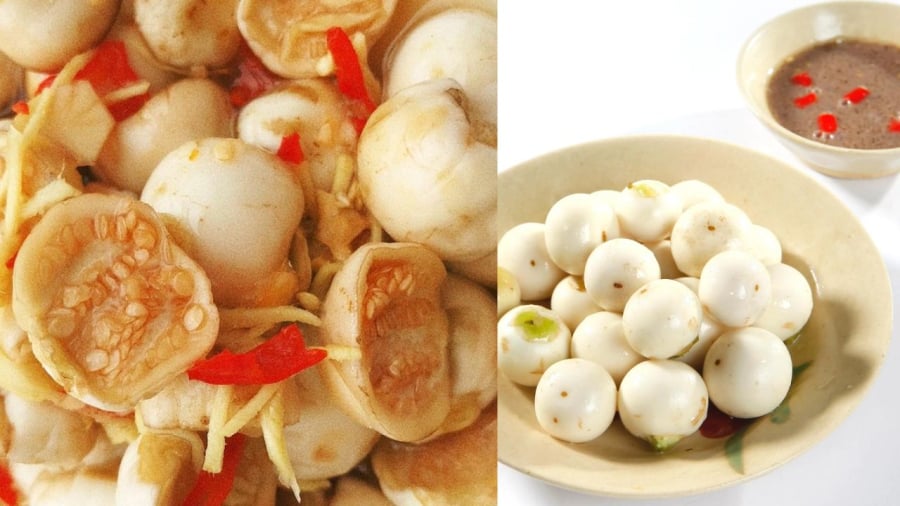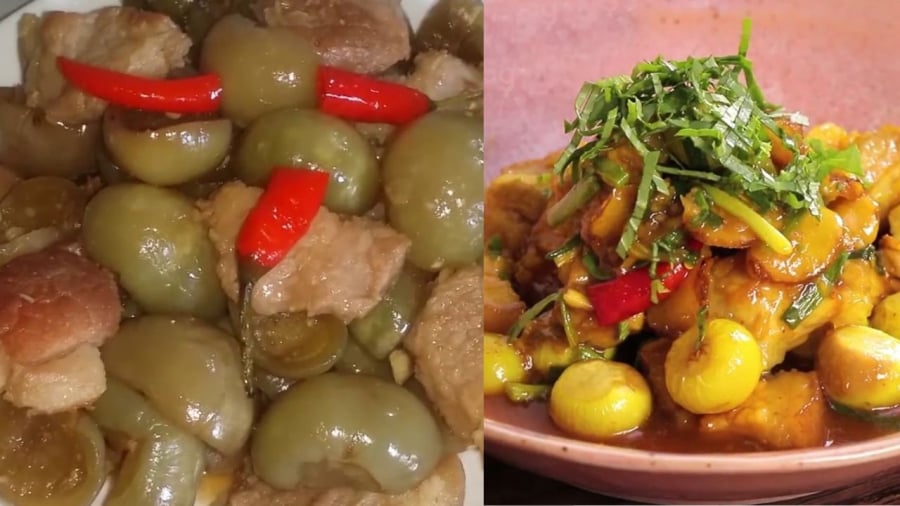In Vietnamese cuisine and Vietnamese life, cà pháo is a familiar food and “creates a longing” for many people. Cà pháo is typically processed into pickled cà muối, compressed cà, sautéed cà, and braised cà. However, if you eat cà pháo without proper processing, it can become toxic, satisfying your taste buds but causing health concerns. Therefore, the saying goes that one cà pháo is worth three months of medicine.
If cà pháo is thoroughly washed and cooked until well done, it is not toxic. However, the Vietnamese often process them in the following three ways, all of which have a high risk of toxicity:
Immediate consumption of pickled cà, eating cà ghém: When pickled cà reaches its level of sourness, there are changes that reduce the amount of nitrites and natural toxins in cà. However, when pickling is done, solanine, a natural toxin in cà, still remains in the fruit, which is toxic to the body. This natural toxin found in cà needs to be soaked and cooked thoroughly or pickled in vinegar. Pickled cà consumed on the same day still retains its spicy and pungent taste and can convert nitrate into nitrite due to the influence of microorganisms in the pickling liquid, which may affect health.
Excessive consumption of pickled cà: Pickled cà usually contains a lot of salt, so consuming too much cà can lead to an excess of salt in the body. Excess salt can increase the risk of kidney and cardiovascular problems. Prolonged high-salt intake can also contribute to the development of cancer.

Pickled cà is delicious, but eating pickled cà immediately or consuming too much pickled cà is not good for your health
Pickled cà, raw cà dipped in shrimp sauce is a favorite dish of many people, but it is highly toxic.
Pickling cà in paint cans, single-use plastic containers:
The thrift habit of Vietnamese people, sometimes not the most beneficial, is the excessive reuse of items for food. Paint cans and plastic containers used to store industrial chemicals, even after multiple washes, may still retain additives, colorants, solvents, etc., from the paint. These types of containers are not suitable for food use, and the risk of contamination from plastic additives into food is higher, making it more hazardous. Single-use plastic containers are also not suitable for storing foods with high acidity, such as pickled cà. Therefore, storing pickled cà in paint cans, plastic containers that do not meet standards is very dangerous to health. They can lead to obesity and cancer.
Eating raw unsoaked cà xanh: Cà pháo itself contains a natural toxin called solanine. When you cut the cà and eat them raw in water, you need to lower the solanine concentration. Eating raw cà like eating other fruits is not good for your health because it means consuming the toxic substance as well. If you eat a lot or eat cà with a high concentration of this substance, it can cause nausea. In severe cases, it can be life-threatening.

Cà contains natural toxins, so it needs to be soaked and cooked before processing
How to eat cà for health benefits
According to Eastern medicine, cà pháo has a sweet taste, a cooling nature, and has the effects of promoting blood circulation, reducing inflammation, and loosening the bowels. Modern medicine analysis of the ingredients shows that cà pháo provides 1.5g of protein (containing all essential amino acids for the body), 12mg of calcium, 0.7mg of iron, 18mg of magnesium, 16mg of phosphorus, 22.1mg of potassium, and 0.3mg of zinc.
The natural toxin in cà, solanine, can cause poisoning in doses ranging from 2-5mg/kg of body weight, and if used in doses ranging from 3-6mg/kg of body weight, it can be life-threatening. This substance is also found in sprouting potatoes and green tomatoes. Therefore, when using cà pháo, attention must be paid to the following in order to maximize its benefits:
– It is advisable to eat fully cooked pickled cà and cà muối with the appropriate level of sourness. It is not recommended to eat raw cà, unripe cà, or pickled cà with visible signs of spoilage.
– Soak cà in water until the water turns black, then add salt or cook it.
– When cooking, make sure to cook cà thoroughly, and it is recommended to blanch the cà before further processing. Blanching and discarding the water helps reduce the concentration of toxins in cà.
– When pickling, make sure the cà is pickled until it reaches the appropriate level of sourness before consuming. It is not recommended to eat pickled cà that is excessively pickled or has not pickled long enough.
– It is advised to buy cà during the appropriate season and avoid buying off-season products.
– Absolutely do not eat raw cà or consume excessive pickled cà.
– When pickled cà has foam, it is not advisable to eat.
– Do not store pickled cà in reused plastic containers or thin plastic containers that are not food grade.






























